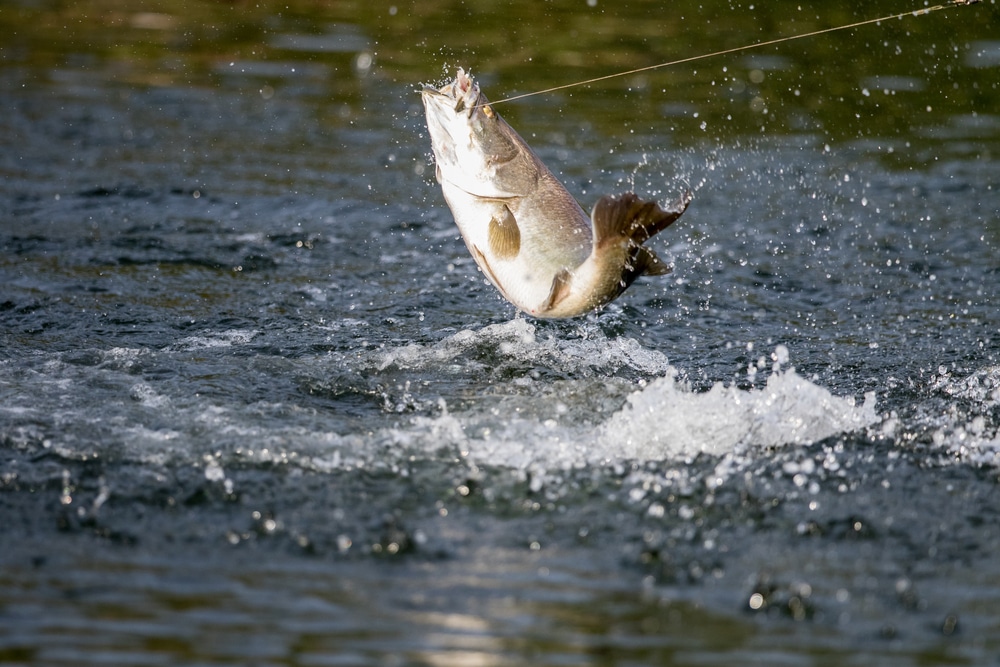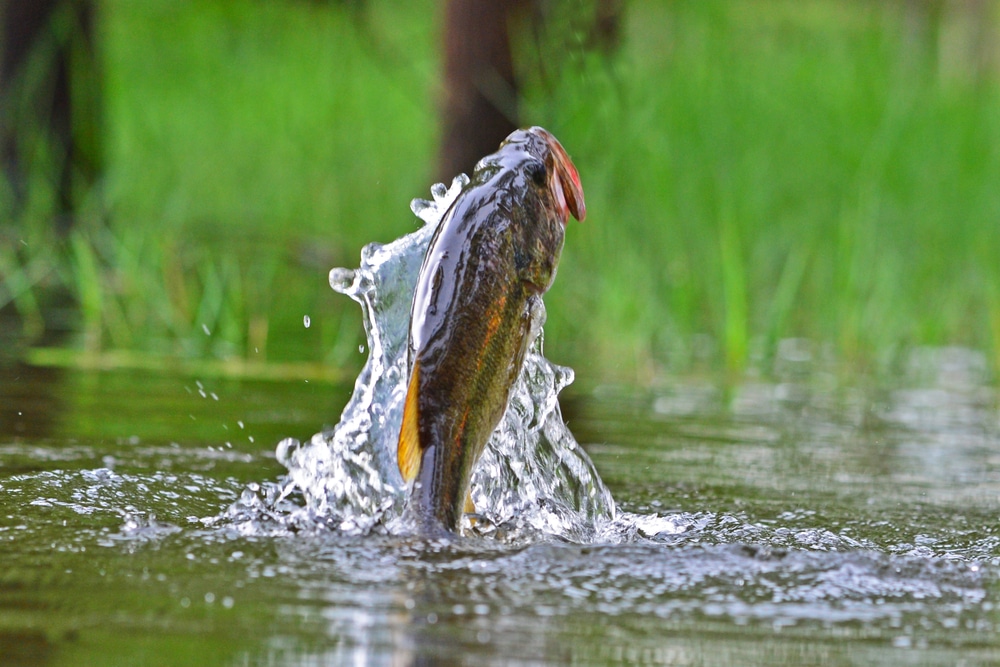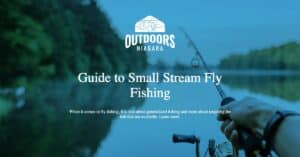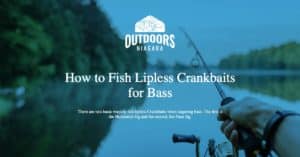Contents
Why Is Bass Jumping Out Of the Water?
Bass jumps out of the water to feed on surface insects or insects that are flying near the surface of the water.
There is a large group of aquatic insects – insects that live part of their lifecycle underwater.
A very common and annoying insect that is found near water as an adult and in the water as a larvae or nymph is the dreaded mosquito.
Other aquatic insects include dragonflies, may fly, ephemerotpera, stone flies, midges, beetles, and a few others.
Dragonfly females lay their eggs on the stem of reeds just beneath the water’s surface.
That task means that the female dragonfly must land on the stem almost at the water’s level, then poke her tail under the water and place the egg on the reed.
She is 100 percent vulnerable to fish and other aquatic predators during that time.
Other female insects, such as ephemerotpera (May fly) – drop or dot eggs onto the surface of the water.
When the females mate the water can look like it is raining as the tiny flies dab the water’s surface with their tail releasing eggs into the water.
The process drives fish crazy, and you will see them breaking the surface to eat the adult insects.
Feeding is the biggest reason why fish jump out of the water. Other reasons can include trying to evade a predator or if startled.

When Do They Jump?
Generally, you will see more insects laying eggs in water at dawn and dusk. That is when you would expect fish to jump.
The phenomenon and relationship between fish and insects is very primal and cyclical. It is where the term “match-the-hatch” originated.
Matching the hatch is very important if you want to be successful at catching fish.
The populations of fish in a body of water – stream, lake, pond, etc. – are each very attuned to the cycle of food and the emergence and productive cycles of insects.
When you match the hatch you are fishing with lures or flies that are very close mimics to the insects that are present in the water or that are using the water as part of their reproductive cycle.
Note: Different insects emerge and reproduce at different times so the cycle of emergence and the cycle of reproduction change daily in some spot.

How Do You Catch a Jumping Bass?
The best way to catch bass when they are jumping is to match-the-hatch.
Hit the water with a top floating lure or fly that is similar to the insects that are present.
There are two main points that you need to know.
- The emerging cycle of insects means when the insect eggs hatch into naiads or when the naiads pupate to turn into adults. A naiad is the scientific name given to an aquatic larva. You can shop for naiads lures and flies.
- The reproductive cycle of insects represents the time when a population of a species of insects mate and then deposit eggs into the water.
There are really three insect-fish cycles that you need to learn to successfully catch fish when nobody else is. When the bass are not interested in your colorful lure or jig, match-the-hatch.
What Do You Do When A Bass Jumps and Goes After Bugs?
If the bass are jumping, and they are not interested in your lures or bait, then switch your lure, fly, or bait to something that resembles the insects that are flying near the water.
Use a surface fly or dry fly, a surface lure of shallow lure, and add that to a longer leader.
The longer leader can be 3 or so feet long. For fly-fishing a longer leader can be six or eight feet long.
The idea of using a longer leader is to hide the line attached to the leader from the fish.
You want to create a small disturbance on the surface of the water rather than a big splash.
Bass have excellent eyesight even in dawn or dusk waters. If they are surface feeding, that is where you need to put your lure of fly.
Why Does Bass Jump at Night?
Many species of insects are nocturnal. A good example of nocturnal insects are moths.
Many of the neuropteran insects also fly at night. Largemouth bass have excellent night vision, and they will gladly strike a surface fly or lure at night.
Final Thoughts
The reason that fishing works is that fish are driven to feed whenever food is available.
Following fish behavior is a good way to understand what drives their needs.
A single fish jumping may mean one thing but when a lot of fish are jumping, it means they are feeding on a swarm of insects.
Match-the-hatch and tap into the bass’ natural feeding frenzy.
The best thing you can do to take advantage of fishing that jump, is to stock up on flies and lures that mimic common aquatic insects in the area where you fish.
Not every pond or lake will have the same populations of insects.So, it is important to know what’s there before you go.
A fishing journal can be a big help if you fish in the same spots year-round. Make notes of what worked and the times of year you used those lures or flies.







